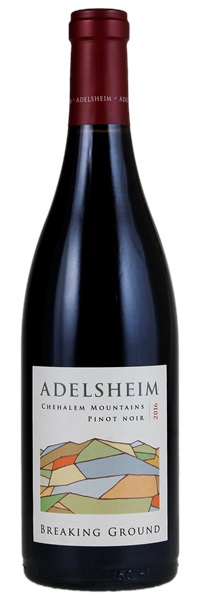Estimate

Spice-accented black and cherry scents... Silky and appealingly sweet, offering pliant cherry and red berry flavors that show no rough edges. In an appealingly approachable style, showing very good energy and lift on a long, gently tannic finish that echoes the cherry note.
...firm mix of plum, blackberry and tart marionberry fruit, it's ripe and stylish, with seams of dark chocolate and espresso. The tannins are ripe and proportionate and leave a pleasantly toasty impression.
Red-fruited and elegant with faint earthy aromas, well-integrated oak and light supple tannin... The fruit profile differs but the structure remains the same across Pinot Noirs. Light supple tannin, fresh acid, medium alcohol.